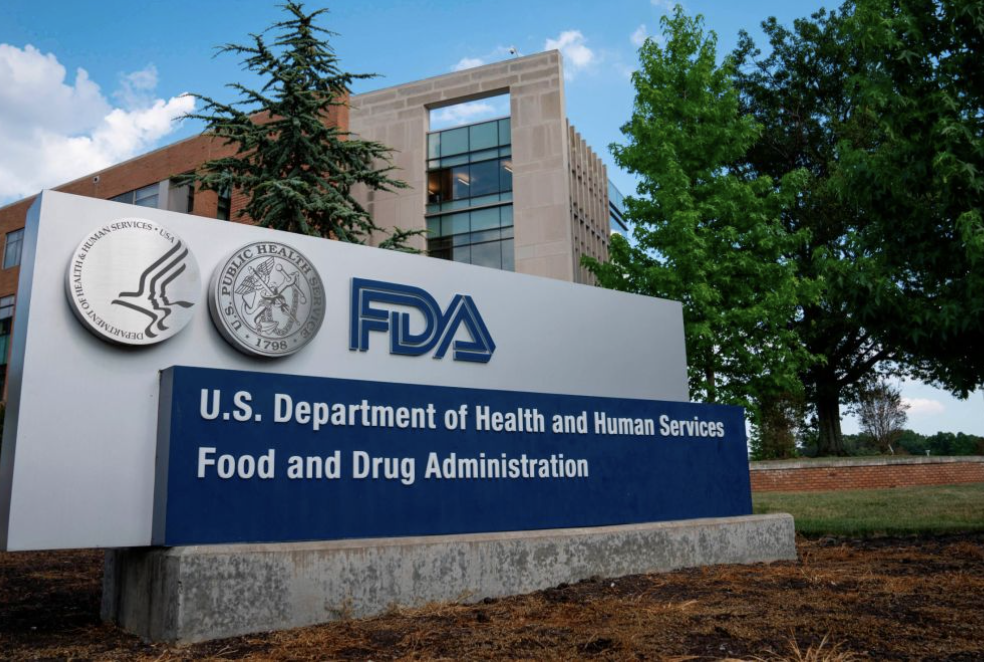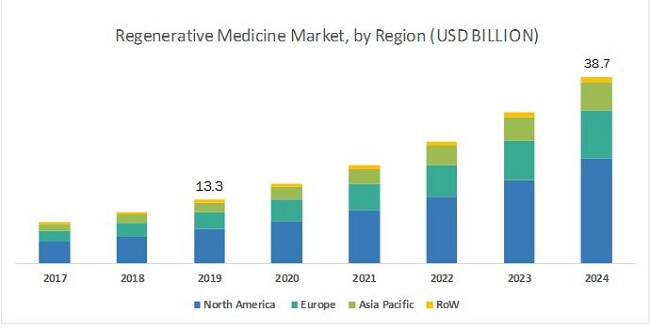FDA’s Regulatory Considerations for Human Cells, Tissues, and Cellular and Tissue-Based Products: Minimal Manipulation and Homologous Use

According to a recent report, the regenerative medicine market has been witnessing considerable growth on the back of rising incidence of chronic diseases, rapidly growing medical research facilities, increasing investment by pharmaceutical manufacturers, and growing government initiatives. The growth has been primarily driven by the powerful and positive effective treatments of chronic diseases, such as osteoarthritis. In addition, expanding product pipeline of companies and growing number of partnerships and collaborative agreements in this industry is anticipated to fuel the market growth in forecast period.
Related Research Report Global Regenerative Medicine Market Analysis & Forecast to 2023; Stem Cells, Tissue Engineering, BioBanking & CAR-T Industries report provides a comprehensive overview of the size of the regenerative medicine market, segmentation of the market (stem cells, tissue engineering and CAR-T therapy), key players and the vast potential of therapies that are in clinical trials. According to Kelly Scientific, analysis indicates that the global regenerative medicine market was worth $28 billion in 2018 and will grow to over $81 billion by 2023, with a CAGR of 23.3% between this time frame.
The demand for high quality and effective regenerative medicine is only going to continue, especially with the growth of chronic diseases such as diabetes and osteoarthritis. Osteoarthritis(OA) is a chronic, costly and debilitating condition that historically has been attributed to mechanical degeneration. Currently, there are no disease-modifying OA drugs that are proven to modulate the metabolic and inflammatory processes of OA. Thus, the demand for intra-articular amniotic fluid injections is growing at a rapid rate and is starting to become the main treatment of choice by many physicians to fight this painful disease.

Fortunately, there are regenerative medicine treatments that have been shown to be very effective in treating OA. According to Hannon et. al, “amniotic membrane’s (AMs) have several functions that make them a promising therapy for OA. AMs contain anti-inflammatory factors and upregulate several anti-inflammatory pathways, such as IL-10 and IL-1Ra, which may help alter OA inflammation. Growth Factors indentified in AM include IL-4; IL-6; IL-8; IL-10; TIMP-1, -2, and -4; EGF;TGF-B; and platelet-derived growth factor (PDGF)-AA and -BB. In addition, MMPs are inhibited by AMs through up-regulation of TIMPs. AMs are also rich sources of HA and some proteoglycans, which could play a role in the potential therapeutic relief of OA.”

Acellular minimally manipulated tissue allografts are utilized to help treat a wide variety of conditions and are shown to help the body boost its ability to heal itself. The allografts help promote the body’s own healing process to assist in the reconstruction and regeneration of injured tissue. This can lead to an alleviation of pain, and a quick recovery.